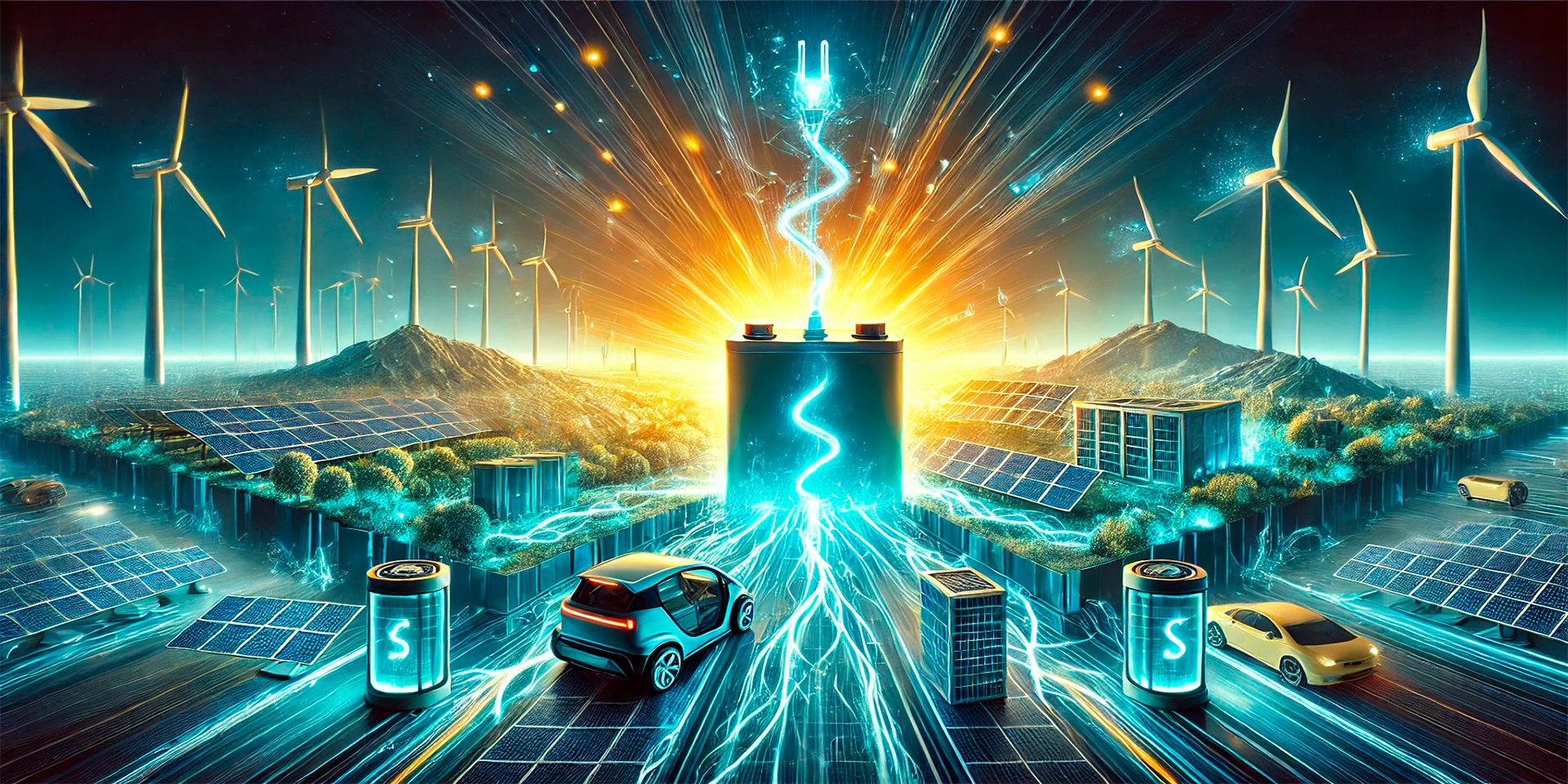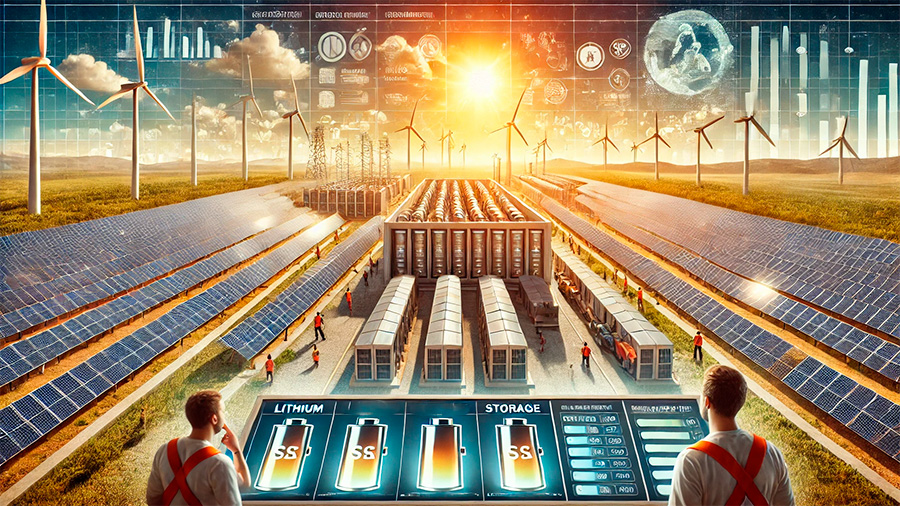From Electric Vehicles to Solar Storage: Lithium’s Role in the Energy Shift

Lithium has become a cornerstone in the transition to renewable energy, playing a critical role in the production of batteries that power everything from electric vehicles (EVs) to energy storage systems. As the world seeks to reduce its dependence on fossil fuels and embrace cleaner energy solutions, lithium’s importance continues to grow. This article explores how lithium is fueling the energy revolution, its vital role in battery production, and the global impact it has on renewable energy adoption.
The Role of Lithium in Battery Technology
Lithium is the primary material used in the production of lithium-ion (Li-ion) batteries, which are the most widely used type of rechargeable battery. These batteries are essential for a variety of renewable energy applications, including electric vehicles, solar energy storage, and grid-scale energy systems. Lithium-ion batteries offer several advantages, including high energy density, long lifespan, and rapid charge times, making them ideal for storing and utilizing renewable energy.
1. Lithium-Ion Batteries: The Backbone of Renewable Energy
Li-ion batteries are the preferred choice for many renewable energy technologies due to their efficiency, lightweight design, and relatively low cost. These batteries enable the storage of electricity generated by renewable sources like solar and wind, which are intermittent and rely on good weather conditions. With lithium-ion batteries, excess energy produced during sunny or windy days can be stored and used when renewable generation drops, such as during the night or periods of low wind.
Key characteristics of lithium-ion batteries:
- High energy density: Li-ion batteries can store a large amount of energy in a relatively small and lightweight form factor, making them ideal for applications like electric vehicles and energy storage systems.
- Long lifespan: These batteries have a longer lifespan compared to other types of rechargeable batteries, reducing the need for frequent replacements and minimizing waste.
- Rapid charge and discharge times: Li-ion batteries charge and discharge quickly, making them ideal for applications where energy needs to be stored and accessed quickly, such as in EVs.
2. Lithium in Electric Vehicles (EVs)
Electric vehicles are one of the most significant contributors to the global push for renewable energy. By reducing reliance on gasoline and diesel, EVs help lower greenhouse gas emissions, air pollution, and the global demand for fossil fuels. Lithium-ion batteries are a key component of EVs, providing the energy storage needed to power electric motors and extend the range of these vehicles.
How lithium drives the electric vehicle revolution:
- Battery capacity: The performance of an EV is directly tied to the capacity of its battery. Lithium-ion batteries provide the energy density needed to ensure that electric vehicles have a sufficient range to compete with traditional gasoline-powered cars.
- Faster adoption of EVs: As lithium-ion battery technology continues to improve, the cost of EV batteries has dropped significantly, making electric vehicles more affordable and accessible to consumers.
- Reducing carbon emissions: By powering EVs with renewable energy stored in lithium-ion batteries, the carbon footprint of transportation can be significantly reduced, supporting global efforts to combat climate change.

Lithium and Energy Storage Systems
In addition to its role in EVs, lithium also plays a critical role in energy storage systems, which are crucial for integrating renewable energy sources into the grid. Solar and wind power generation can fluctuate, meaning energy production doesn’t always align with demand. Energy storage systems, powered by lithium-ion batteries, store excess energy produced during peak generation periods and release it when needed, ensuring a steady and reliable power supply.
1. Grid-Scale Energy Storage
Large-scale energy storage systems are becoming increasingly important as more renewable energy is integrated into the electrical grid. Lithium-ion batteries allow for efficient, scalable energy storage that can be deployed at various locations, ensuring that power generated by renewable sources is stored for later use. These systems help grid operators balance supply and demand, providing stability and resilience to the grid.
How lithium helps grid-scale energy storage:
- Storage of excess energy: When solar or wind energy is abundant, lithium-ion batteries store the surplus electricity for later use, reducing the need for fossil fuel-based backup generation.
- Enhancing grid reliability: Energy storage systems can provide backup power during periods of high demand or when renewable generation is low, improving the reliability of the grid.
- Grid integration of renewables: Lithium-ion batteries make it easier to integrate renewable energy sources into the grid by addressing the intermittency of solar and wind power, ensuring a stable and continuous energy supply.
2. Residential and Commercial Energy Storage
In addition to large-scale grid applications, lithium-ion batteries are also used in residential and commercial energy storage systems. These systems allow homeowners and businesses to store electricity generated by rooftop solar panels, which can then be used during times when the sun isn’t shining. This helps reduce reliance on the grid and lower energy costs, while also contributing to the broader adoption of renewable energy.
How lithium supports residential and commercial energy storage:
- Self-sufficiency: By storing solar energy for later use, homeowners can become more energy-independent, reducing their reliance on utility companies and lowering electricity bills.
- Cost savings: By using energy storage systems, businesses can lower their energy costs by storing electricity during off-peak hours, when rates are lower, and using it during peak hours when electricity is more expensive.
- Supporting renewable energy growth: Small-scale energy storage systems enable more people to adopt renewable energy solutions, contributing to the overall shift toward a greener, more sustainable energy grid.

The Global Demand for Lithium: Challenges and Opportunities
The growing demand for lithium, driven by its critical role in the energy revolution, presents both opportunities and challenges. As the world transitions to cleaner energy, the need for lithium to power EVs, energy storage systems, and other renewable energy technologies is expected to rise. However, the extraction and processing of lithium come with environmental and geopolitical challenges that must be addressed.
1. Environmental Challenges of Lithium Mining
While lithium is abundant in the Earth’s crust, extracting it requires significant energy and water resources, and mining operations can have environmental impacts, including water depletion, habitat destruction, and pollution. The mining industry must work to mitigate these impacts through improved technologies and sustainable practices.
Environmental considerations in lithium mining:
- Water usage: Lithium extraction, particularly in areas like the lithium-rich salt flats in South America, requires large amounts of water, which can strain local water resources.
- Land degradation: Mining operations can cause land degradation, disrupting local ecosystems and wildlife.
- Recycling efforts: To reduce the need for new lithium extraction, there is a growing focus on recycling lithium from used batteries, which can help mitigate environmental impacts and reduce dependency on primary resources.
2. Geopolitical and Supply Chain Considerations
The global demand for lithium has led to competition among countries for access to the metal, particularly as the transition to renewable energy accelerates. Countries like Australia, Chile, and China hold significant shares of global lithium reserves, which can create geopolitical tensions and impact supply chains. Managing these supply chain dynamics will be critical to ensuring a steady and sustainable flow of lithium to meet global demand.
Geopolitical issues surrounding lithium production:
- Supply chain security: As countries compete for lithium resources, ensuring a stable and secure supply chain is crucial to supporting the global energy transition.
- Resource nationalism: Some lithium-producing countries may prioritize domestic needs or impose export restrictions, potentially affecting global supply.
- International cooperation: Countries must work together to promote sustainable mining practices and ensure fair access to lithium resources while minimizing the environmental impact.
Conclusion
Lithium is at the heart of the global energy revolution, playing a crucial role in the production of batteries that power electric vehicles, store renewable energy, and support the transition to a cleaner, more sustainable energy future. As demand for lithium grows, addressing the environmental and geopolitical challenges surrounding its extraction and distribution will be essential to ensuring a stable supply. By leveraging lithium’s power, we can drive the transition to renewable energy, reduce our reliance on fossil fuels, and build a sustainable future for generations to come.
